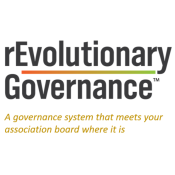
Dysfunctional Board of Directors? Here Are Some Survival Tips.
In my previous post, The Ideal Rules of Engagement for Board and Staff, I talked about how the challenges in board of directors/staff relationships generally arise from three types of board engagement: disengaged, over-engaged, or engaged in the wrong way.
Types of Board of Directors – Staff Dysfunction
Staff often becomes the fall guy for board dysfunction – collateral damage, if you will. But that said, staff is not immune to or above petty politics that may play out on the board. They may even become part of it – or worse, the source of it. Some examples of dysfunctional board/staff engagement include:
- Divisiveness: A divisive board member may be just as difficult in their interactions with staff as they are with board members, maybe more so. Frustrated staff may inappropriately react.
- Deflection: A common deflection tactic for an underperforming board member is to throw staff under the bus to shift the focus off of themselves (usually when the staff person isn’t there to defend themselves).
- Choosing Sides: Staff may be their own worst enemy by choosing sides when a board becomes factional. If their side ends up on the losing end, so do they.
- Favoritism: Sometimes executives pick favorites, operating under the belief: “If I pack the board with my friends, I’m safe.” Board members who aren’t the “chosen ones” generally see through this and resent it, which may eventually lead to a shift against the executive.
On that note, a piece of advice I got from a fellow executive is “the members are not your friends.” If a board member is truly a good board member, they will take action in the best interest of the organization, which may mean firing you even if they are your friend. The best path to long-term employment is being competent, serving the best interest of the organization, staying true to your values, and staying above the politics – not packing the board with your friends.
rEvolutionary Governance™ is built on the idea that every association, regardless of size and resources, can operate optimally at the stage of evolution it is in now.”Jeff Arnold
President, Leading Associations
Surviving Board Dysfunction
My general advice to staff is to recognize board dysfunction and personally stay clear of it. Let it stay between and among board members. Do not become part of the problem. Especially avoid being a willing participant – or worse, an instigator.
As staff, don’t try to mediate volunteer-to-volunteer conflict; that’s the board chair’s job. If the board leadership won’t “own” the problem (or is the problem), bring in an outside facilitator if necessary, but don’t let yourself get in the middle (refer to previous paragraph on “collateral damage”).
Ultimately, the board needs to take ownership of its culture. If staff has become part of the culture, the executive needs to identify where this is happening and extricate staff from the equation. Seek outside counsel and expertise if necessary, but continuing to engage in a reactive cycle (i.e., doing the same thing over and over), certainly won’t change the dynamic.
Creating the right kind of board engagement is key to healthy Board/staff working relationships. Oftentimes, an unbiased outside perspective can be the bridge to guide parties to a win-win resolution. Need help? Leading Associations has helped hundreds of associations strengthen Board/staff relationships. Contact us to learn about free resources and complimentary Board Health Test.




